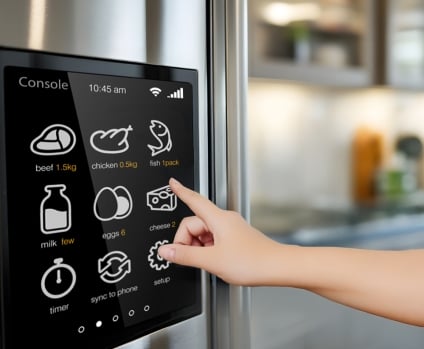Capacitive Touch Technology for a Connected World
Capacitive touch keys are revolutionizing human-machine interfaces (HMIs) by replacing the fixed functions of mechanical switches. These keys offer more intuitive interfaces that incorporate complex and sophisticated operations, making them suitable for a variety of applications. The rapid expansion of capacitive touch keys is driven by their ability to enhance user experience through improved navigation and functionality.
Achieving such intuitive usability isn’t without its challenges. Developers need to tackle obstacles like improving sensitivity, managing noise interference, and ensuring reliable performance—even in real-world conditions, like when hands are wet.
High Sensitivity
Our capacitive touch IP provides enhanced operability under a variety of conditions. Whether it’s sensing through thick acrylic or wood panels in household appliances, our solutions deliver exceptional operability where it matters most.
Noise Tolerance
We've built noise immunity into the core of our solutions. By implementing multi-frequency measurement functions, we ensure robust performance against conducted and radiated RF noise, so your devices operate flawlessly in noisy environments.
Easy Development
With our QE for capacitive touch toolkit, development is simple. Running in the e² studio integrated development environment, it makes configuring initial sensor settings and fine-tuning touch sensitivity quick and efficient. This tool can connect your product’s board and enable you to tune sensor settings.
Low Power Consumption
Our capacitive touch products and solutions feature a multiple electrode connection, as well as an automatic judgment function to achieve low-power consumption standby operation.

